
The South West Africa campaign was the conquest and occupation of German South West Africa by forces from the Union of South Africa acting on behalf of the British imperial government at the beginning of the First World War.

The South African Army is the principal land warfare force of South Africa, a part of the South African National Defence Force (SANDF), along with the South African Air Force, South African Navy and South African Military Health Service. The Army is commanded by the Chief of the Army, who is subordinate to the Chief of the SANDF.
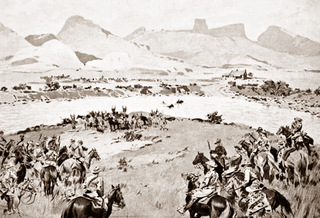
The Maritz rebellion, also known as the Boer revolt, Third Boer War, or the Five Shilling rebellion, was an armed insurrection in South Africa in 1914, at the start of World War I. It was led by Boers who supported the re-establishment of the South African Republic in the Transvaal. Many members of the South African government were themselves Boers who had fought with the Maritz rebels against the British in the Second Boer War, which had ended twelve years earlier. The rebellion failed, and its ringleaders received heavy fines and terms of imprisonment. One of them, Jopie Fourie, was executed.

Nicolaas Pieter JohannesJanse van Rensburg was a Boer from the South African Republic – also known as the Transvaal Republic – and later a citizen of South Africa who was considered by some to be a prophet of the Boers. Consequently, his nickname became "Siener". Van Rensburg's visions were typically wrapped in a patriotic, religious format, and have been interpreted by believers as predictions of future events. During the Boer War he became a trusted companion, if not advisor to General de la Rey and President Steyn. The extent of his influence with these figures is disputed, though the devoutly religious de la Rey seemed to have considered him a prophet of God.
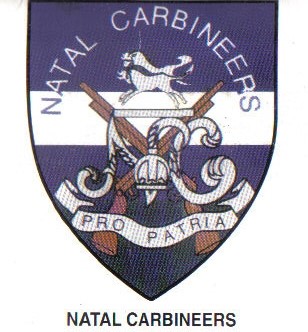
The Ingobamakhosi Carbineers is an infantry unit of the South African Army.

The Battle of Colenso was the third and final battle fought during the Black Week of the Second Boer War. It was fought between British and Boer forces from the independent South African Republic and Orange Free State in and around Colenso, Natal, South Africa on 15 December 1899.

The Johannesburg Light Horse Regiment, is a reserve armoured car reconnaissance unit of the South African Army.

The Queen Nandi Mounted Rifles is an reserve armoured regiment of the South African Army.

The Umvoti Mounted Rifles is an armoured regiment of the South African Army. As a reserve unit, it has a status roughly equivalent to that of a British Army Reserve or United States Army National Guard unit. It is part of the South African Army Armour Formation and is based in the town of Pinetown.
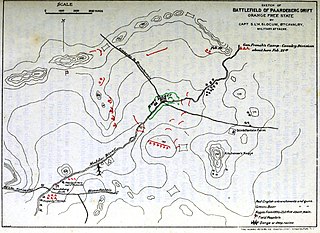
The Battle of Paardeberg or Perdeberg was a major battle during the Second Anglo-Boer War. It was fought near Paardeberg Drift on the banks of the Modder River in the Orange Free State near Kimberley.

The Nelson Mandela Artillery Regiment is a reserve artillery regiment of the South African Army and part of the South African Army Artillery Formation.

The 1st Royal New South Wales Lancers was an Australian Army light cavalry (reconnaissance) regiment. Its complicated lineage includes the New South Wales Lancers which was first formed as a colonial unit in 1885 as the New South Wales Cavalry, and subsequently saw action in the Second Boer War, and later during First World War at Gallipoli and Palestine as the 1st Light Horse Regiment. The unit subsequently served during the Second World War as the 1st Armoured Regiment equipped with Matilda tanks, fighting the Japanese in New Guinea and Borneo.
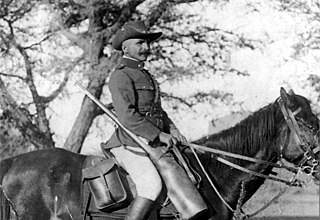
The Battle of Sandfontein was fought between the Union of South Africa on behalf of the British Imperial Government and the German Empire on 26 September 1914 at Sandfontein, during the first stage of the South West Africa Campaign of World War I, and ended in a German victory.

Jan Christoffel Greyling Kemp was a South African Boer officer, rebel general, and politician.
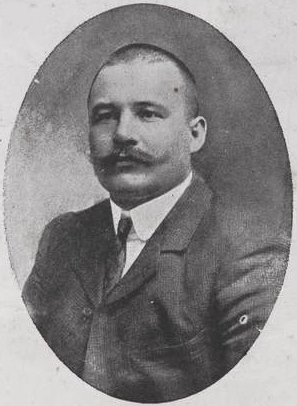
Manie Maritz, also known as Gerrit Maritz, was a Boer officer during the Second Boer War and a leading rebel of the 1914 Maritz Rebellion. Maritz was also a participant in the Herero and Namaqua genocide. In the 1930s, he became an outspoken Nazi sympathizer and a supporter of Nazi Germany.

Bloemhof Commando was a light infantry regiment of the South African Army. It formed part of the South African Army Infantry Formation as well as the South African Territorial Reserve.

Calvinia Commando was a light infantry regiment of the South African Army. It formed part of the South African Army Infantry Formation as well as the South African Territorial Reserve.

Brigadier General John Robinson Royston, was a Colony of Natal-born military officer who commanded a brigade of Australian Light Horse during the First World War.
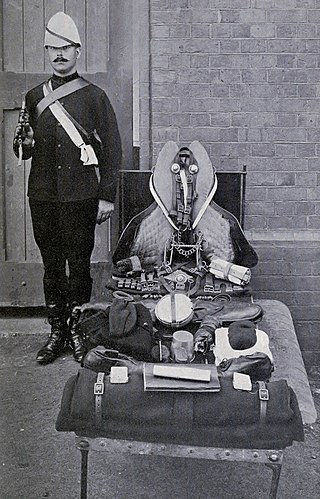
The Natal Mounted Police (NMP) were the colonial police force of the Colony of Natal created in 1874 by Major John Dartnell, a farmer and retired officer in the British Army as a semi-military force to bolster the defences of Natal in South Africa. When required the NMP would be assisted by the Colony's volunteer regiments including the Natal Carbineers. It enlisted European officers, NCOs and natives. Men of the NMP fought and died in the Battle of Isandlwana and at Rorke's Drift during the Zulu War of 1879.
South Africa's participation in the First World War occurred automatically when the British Government declared war on Germany in August 1914. Due to her status as a Dominion within the British Empire, South Africa, whilst having significant levels of self-autonomy, did not have the legal power to exercise an independent foreign policy and was tied to the British declaration.



















